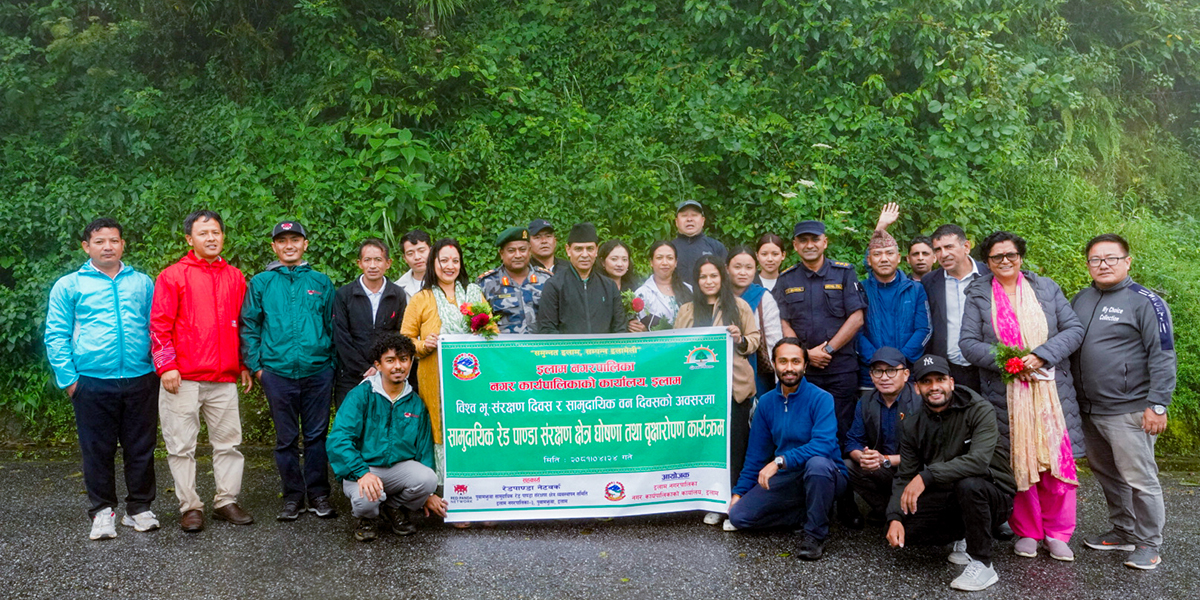
KATHMANDU: Locals of Ilam have declared 116 hectares of community forests in the district as the Red Panda Conservation Area.
A study conducted by the Division Forest Office, Ilam, had earlier identified 116 hectares of forest areas in Puwamai Community Forest and Kalpokhari Thamdanda Community Forest area as an important red panda habitat. The area was formally declared as Red Panda Conservation Area amid a ceremony held at Patinati in Ilam-3 on Thursday.
Last year, the municipality in collaboration with the Red Panda Network had started conservation work by forming a Red Panda Conservation Committee to protect the habitat of Red Panda in the Patinagi area in Ilam-3.
The local committee will now prohibit any work that will affect the red panda habitat in the area. It will also prohibit tourist activities and regulate the harvesting of forest products during red panda’s mating and breeding season.
“We raised awareness among local people by organizing an orientation program after the committee was formed last year,” Ganesh Khadka, chief administrative officer of the municipality, said. “In the same year, the municipality also passed the Puwamajhuwa Community Red Panda Protection and Management Procedure.”
The Local Forest Act prepared by the municipality three years ago paved the way for the declaration of conservation areas. According to Section 59 of the Act, local committees can manage conservation areas if they meet the prescribed standards upon obtaining approval from the municipality and district forest office to ensure sustainable protection of forests and wildlife.
“We organized an orientation for committee members last year. This year, we will plant malingo and nigalo species of bamboo in the conservation areas which is the main food of red pandas,” Khadka said.
Sonam Lama of Red Panda Network said they assisted the local community in establishing red panda conservation area as conservation efforts won’t be successful without local participation.
Similarly, Aang Furi Sherpa, country director of Red Panda Network, said the main goal is to create an environment for red pandas to move freely in that area and to develop their natural breeding center. “The challenge now is the effective management of conservation areas and the opening of livelihoods, including tourism, at the local level.”
Red pandas are native to Nepal, Sikkim (India), Myanmar, Bhutan and South China. In Nepal, red pandas are found in forests in northern areas of Nepal. It is listed as a vulnerable species in the IUCN Red List category and Appendix I of CITES. The legal status of this species in Nepal is Protected (Appendix I) under the National Parks and Wildlife Conservation Act 1973. The red panda population in Nepal is estimated at around 1,000.

 Himal Press
Himal Press 




![Bibaha Panchami festivities observed in Janakpurdham [In Pictures]](https://en.himalpress.com/wp-content/uploads/2025/11/584394131_770830589319498_962420551889758050_n.jpg)








